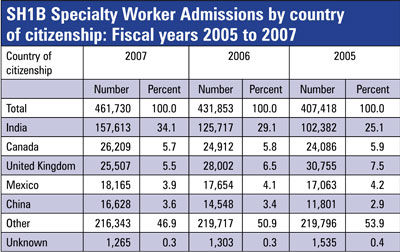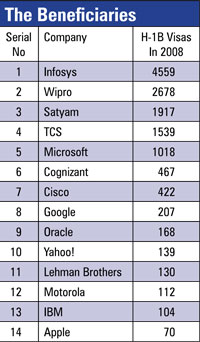Cost rationalization is the flavor of the season. With every enterprise — small or large — looking at reducing costs on all fronts, IT budgets are getting affected too. While large enterprises are moving to outsourcng model and bargaining hard with the vendors, many small companies do not have that kind of option. Yet, they need to minimize costs more than anyone else to be in business.
This story started with the idea of giving some cost minimization tips to small and medium enterprises. But as we were working on it, someone asked: why less cost, why not free? And lo, the effort steered towards identifying IT areas where the enterprises used to spend on, but which they can now get for free. The result is this compendium of free IT heads, largely on using the web. We have even added one free audio conferencing service in the list.
But the challenge in trying to compile such a list is that subjectivity becomes a challenge. The inherent danger of compiling such a list is that a lot many people might not agree with the elements in it and debunk it impractical or childish, while on the other hand a similar audience might actually be happy with the same and use it to their benefit. One man’s honey is truly another’s poison.
The chief purpose of the list is to provide a small guide to the emerging companies to put in place a growth strategy and be able to deal with some of the common pain points. Another point that needs to be noted here is that much of the free software movement has been carried out by the Open Source Community, hence most of the applications that are listed here are essentially open source and free software alternatives to the proprietary ones.
- Free Storage
Backup is the single largest issue faced by small enterprises. While the big daddies have their stacks of NAS and SAN, the smaller companies or entrepreneurs don’t really know how and where to store their documents. The issue is not only of the availability of space but also the ease of use and reuse.
To start off, there are a lot of services that are available online that provide free. There is Dropbox.io that provides a 2 GB online space free to its user and then has graded payment options for people who want more. Box.net is yet another service that allows 1 GB of space free of cost to the user with a file limit of 25MB.
But the one that takes the cake is Windows Live SkyDrive service from Microsoft that currently offers 25 GB of free personal storage, with individual files limited to 50 MB. This is a mammoth amount of storage (for enterprise and important documents) and can be accessed through the web. Earlier Yahoo! also had provided a similar service, Yahoo! Briefcase but now has wrapped it up. According to certain reports, Google also has plans to offer similar kind of service titled as Gdrive.
The Links:
www.skydrive.live.com
www.getdropbox.com
www.box.net
www.humyo.com
www.drop.io
www.mozy.com
www.xdrive.com
www.adrive.com
- Hosting your Website
One of the most important requirements for a business today, is an online presence. Essentially a business without a webpage is basically a like a manager without an MBA degree, he/she can be successful to an extent but after a while requires some sort of formal education to excel. Similarly it is very important for a business or even individuals to have an online presence.

 the world and more importantly to the Indians some 6 years back, of a car that will cost some $2000. Nano is now ready to ferry 5 Indians safely 23.6 kms for every litre of petrol and will apparently hit the roads by June/July 2009, initially in limited numbers. Subsequently, the price might also be revised later (though, there is little scope for it after all the USP of the vehicle is its price).
the world and more importantly to the Indians some 6 years back, of a car that will cost some $2000. Nano is now ready to ferry 5 Indians safely 23.6 kms for every litre of petrol and will apparently hit the roads by June/July 2009, initially in limited numbers. Subsequently, the price might also be revised later (though, there is little scope for it after all the USP of the vehicle is its price). business line. He talked about pumping money in the economy and more importantly ensuring that Americans did not lose their jobs to migrant workers (read Indians). In fact, he had even spoken against the H-1B Visa program, wherein companies were allowed to bring in specialist workers for some 6 odd years in the US.
business line. He talked about pumping money in the economy and more importantly ensuring that Americans did not lose their jobs to migrant workers (read Indians). In fact, he had even spoken against the H-1B Visa program, wherein companies were allowed to bring in specialist workers for some 6 odd years in the US.